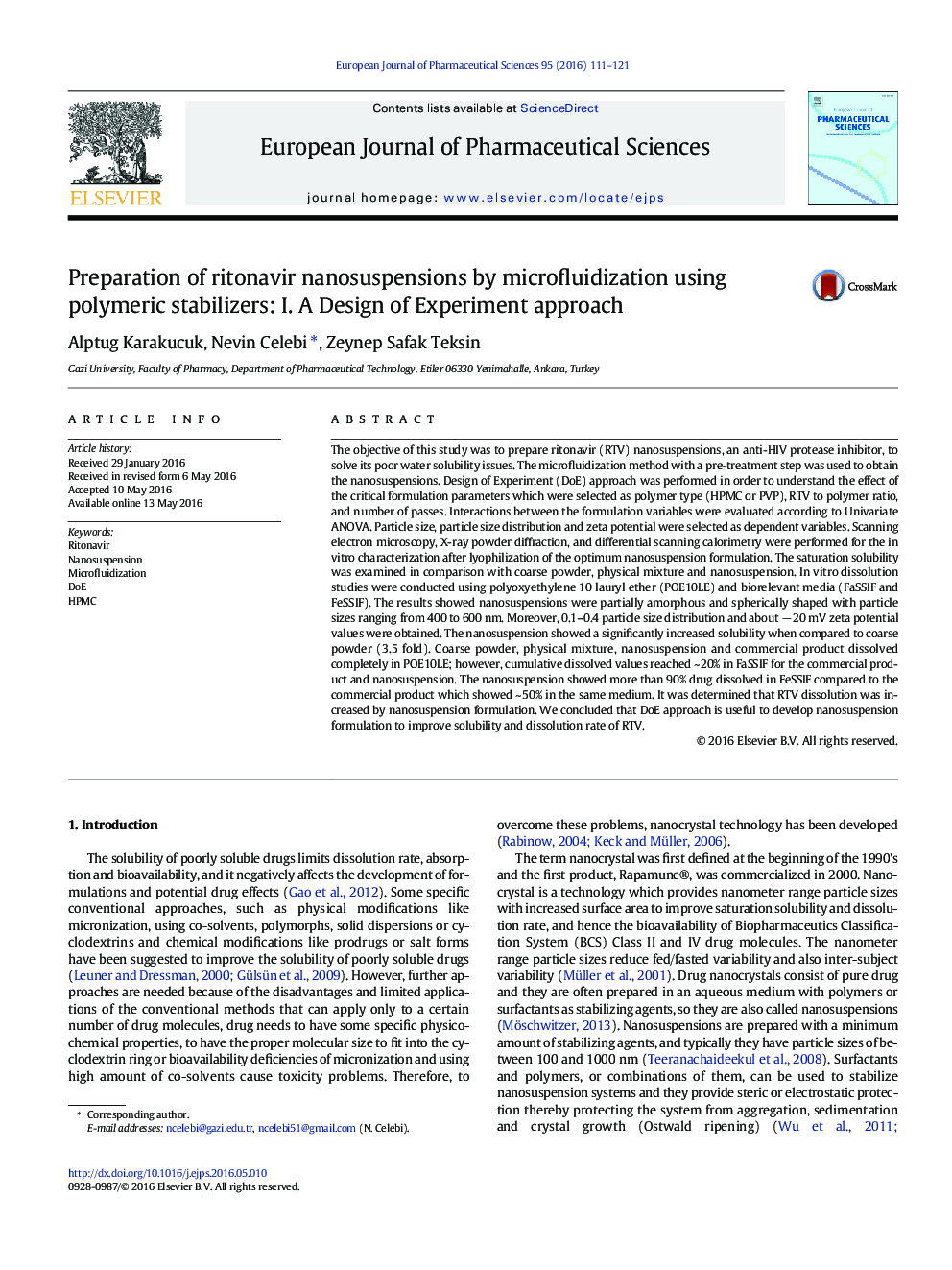| کد مقاله | کد نشریه | سال انتشار | مقاله انگلیسی | نسخه تمام متن |
|---|---|---|---|---|
| 5547945 | 1556155 | 2016 | 11 صفحه PDF | دانلود رایگان |

The objective of this study was to prepare ritonavir (RTV) nanosuspensions, an anti-HIV protease inhibitor, to solve its poor water solubility issues. The microfluidization method with a pre-treatment step was used to obtain the nanosuspensions. Design of Experiment (DoE) approach was performed in order to understand the effect of the critical formulation parameters which were selected as polymer type (HPMC or PVP), RTV to polymer ratio, and number of passes. Interactions between the formulation variables were evaluated according to Univariate ANOVA. Particle size, particle size distribution and zeta potential were selected as dependent variables. Scanning electron microscopy, X-ray powder diffraction, and differential scanning calorimetry were performed for the in vitro characterization after lyophilization of the optimum nanosuspension formulation. The saturation solubility was examined in comparison with coarse powder, physical mixture and nanosuspension. In vitro dissolution studies were conducted using polyoxyethylene 10 lauryl ether (POE10LE) and biorelevant media (FaSSIF and FeSSIF). The results showed nanosuspensions were partially amorphous and spherically shaped with particle sizes ranging from 400 to 600 nm. Moreover, 0.1-0.4 particle size distribution and about â 20 mV zeta potential values were obtained. The nanosuspension showed a significantly increased solubility when compared to coarse powder (3.5 fold). Coarse powder, physical mixture, nanosuspension and commercial product dissolved completely in POE10LE; however, cumulative dissolved values reached ~ 20% in FaSSIF for the commercial product and nanosuspension. The nanosuspension showed more than 90% drug dissolved in FeSSIF compared to the commercial product which showed ~ 50% in the same medium. It was determined that RTV dissolution was increased by nanosuspension formulation. We concluded that DoE approach is useful to develop nanosuspension formulation to improve solubility and dissolution rate of RTV.
Ritonavir nanosuspensions were prepared by microfluidization using Design of Experiment. Interactions between formulation variables were analyzed. Characterization of nanosuspensions was evaluated. In vitro dissolution studies showed enhanced dissolution rate due to reduced particle size.191
Journal: European Journal of Pharmaceutical Sciences - Volume 95, 1 December 2016, Pages 111-121